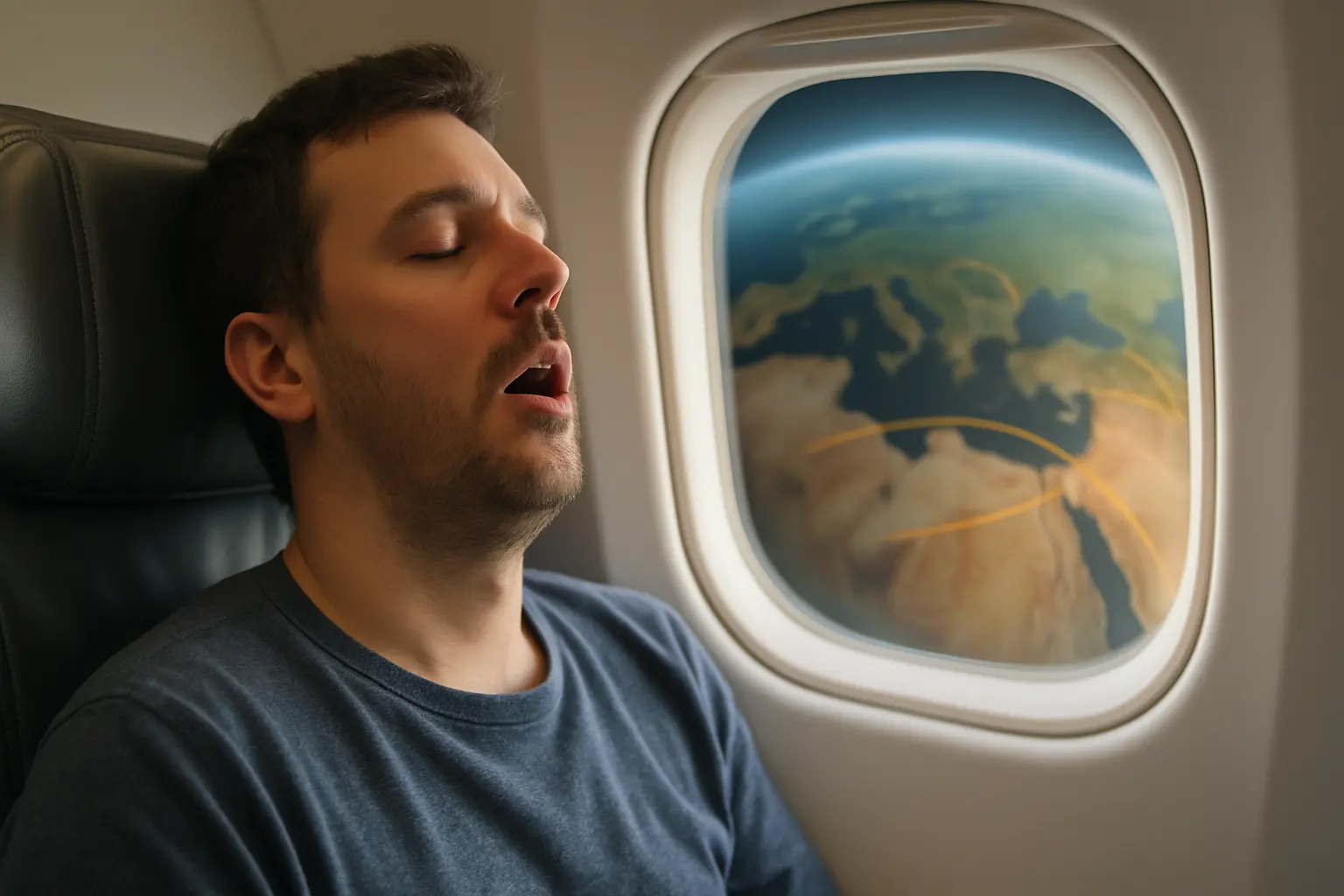Travel, Jet Lag, and Snoring: How Changing Time Zones Affects Sleep Quality
Jetting across multiple time zones is exciting, but it often brings unwelcome companions: snoring, daytime fatigue, and disrupted sleep cycles.
Travelers rarely realize that circadian misalignment can exacerbate snoring and oxygen dips at night.
Why Jet Lag Impacts Snoring
- Circadian rhythm disruption: Our body clock gets out of sync with local time
- Light exposure mismatch: Late-night sun or morning darkness delays sleep onset
- Sleep deprivation: Irregular schedules lead to muscle fatigue in the airway, increasing collapse and snoring
- Hydration and diet changes: Airplane cabins and unfamiliar meals may worsen airway dryness
SnailSleep tracking of 1,200 frequent flyers revealed snoring intensity increases by 18–25% during the first 2 nights after crossing 5+ time zones.
Data Snapshot: Jet Lag and Snoring
| Travel Pattern | Avg. Snore Score (0-100) | Sleep Latency (min) | Deep Sleep % |
|---|---|---|---|
| No travel | 48 | 15 | 22% |
| Short haul (<3 time zones) | 53 | 18 | 20% |
| Long haul (3–5 time zones) | 59 | 22 | 18% |
| Ultra long haul (>5 time zones) | 66 | 28 | 15% |
Jet lag can amplify snoring and reduce restorative sleep, making fatigue and daytime sleepiness worse.
How Circadian Misalignment Affects Airway Health
- Airway muscle fatigue → easier soft palate collapse
- Fragmented REM and deep sleep → less restorative function
- Oxygen saturation dips → micro-arousals increase
- Stress hormone elevation → light sleep and higher snoring intensity
Practical Travel Tips to Reduce Snoring
- Gradually adjust sleep schedule a few days before travel
- Stay hydrated, avoid alcohol and heavy meals on flights
- Use light exposure strategically — morning sunlight to advance clock, evening light to delay
- Track sleep quality — SnailSleep app helps identify high-risk nights and recovery trends
- Maintain airway health — nasal sprays or chin straps can stabilize breathing in new environments
Traveler's Story: Sophia's Transatlantic Trip
Sophia, 36, frequently travels between New York and London.
She noticed louder snoring and daytime fatigue during the first 2 nights.
By following pre-adjusted sleep schedules, light exposure strategies, and using SnailSleep to monitor her airway, she reduced snoring intensity from 65 to 50 and felt refreshed faster after arrival.
Related Articles
- How Alcohol and Late-Night Eating Affect Sleep Quality and Snoring
- When Snoring Gets Dangerous: Early Warning Signs of Sleep Apnea
- Late Bedtimes in Children: Impacts on Sleep and Snoring

